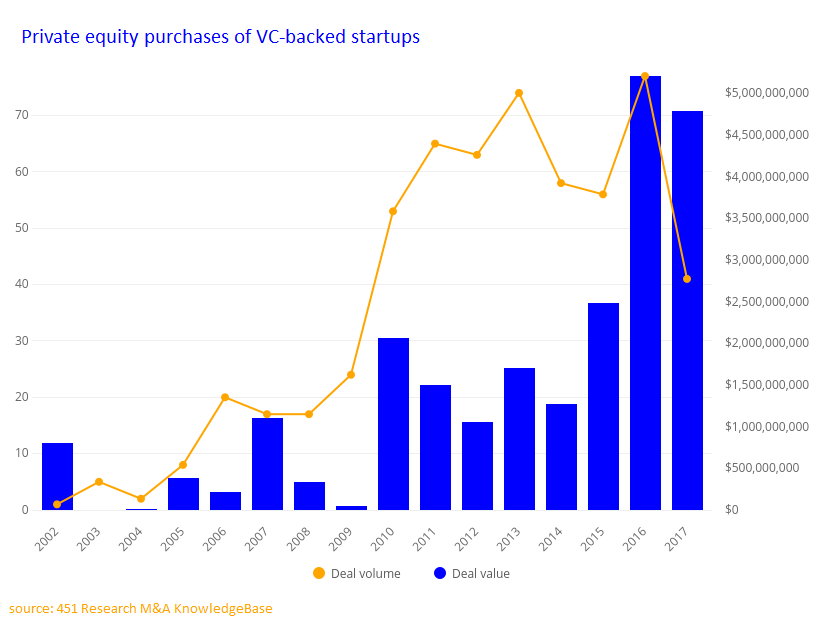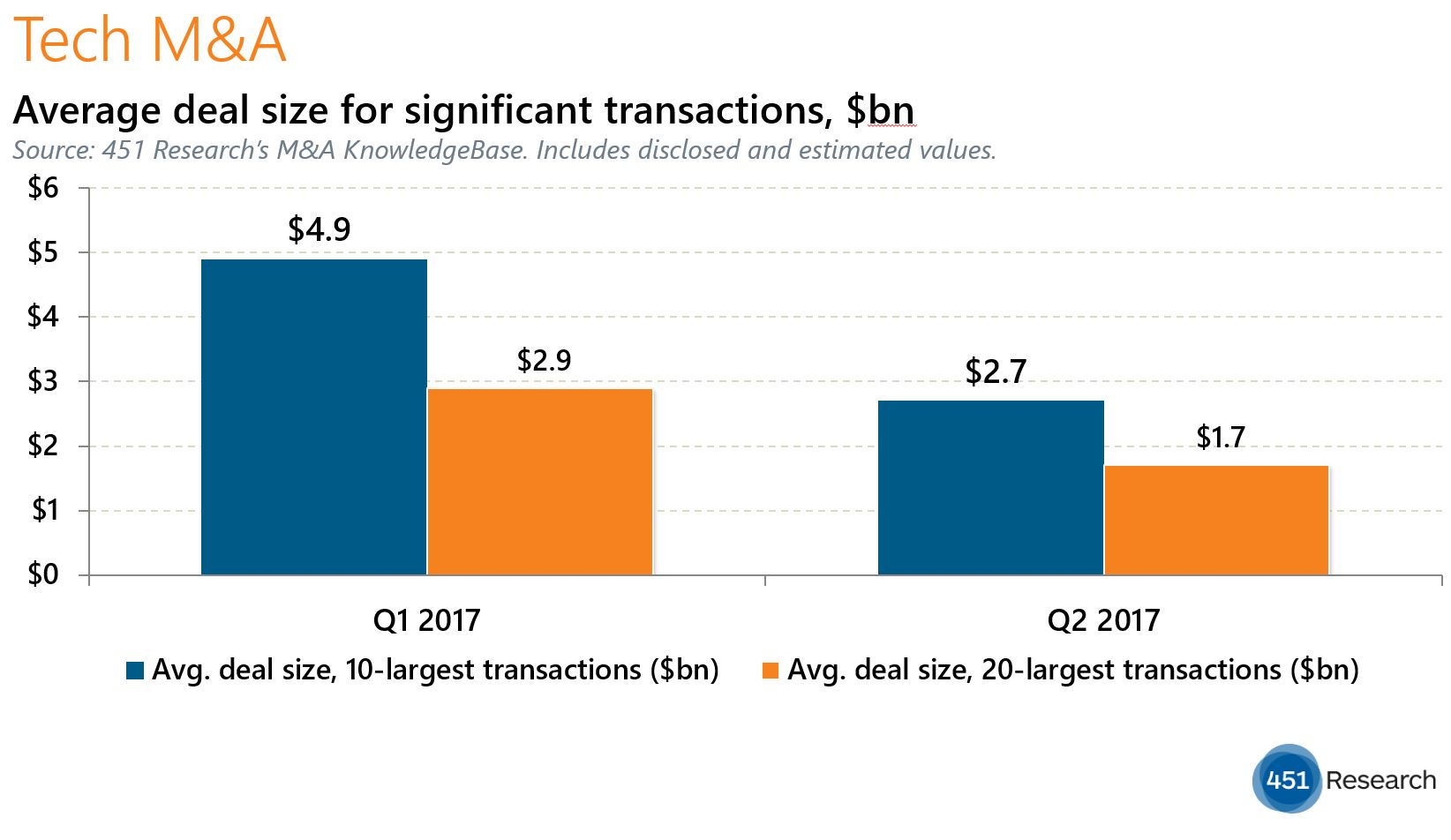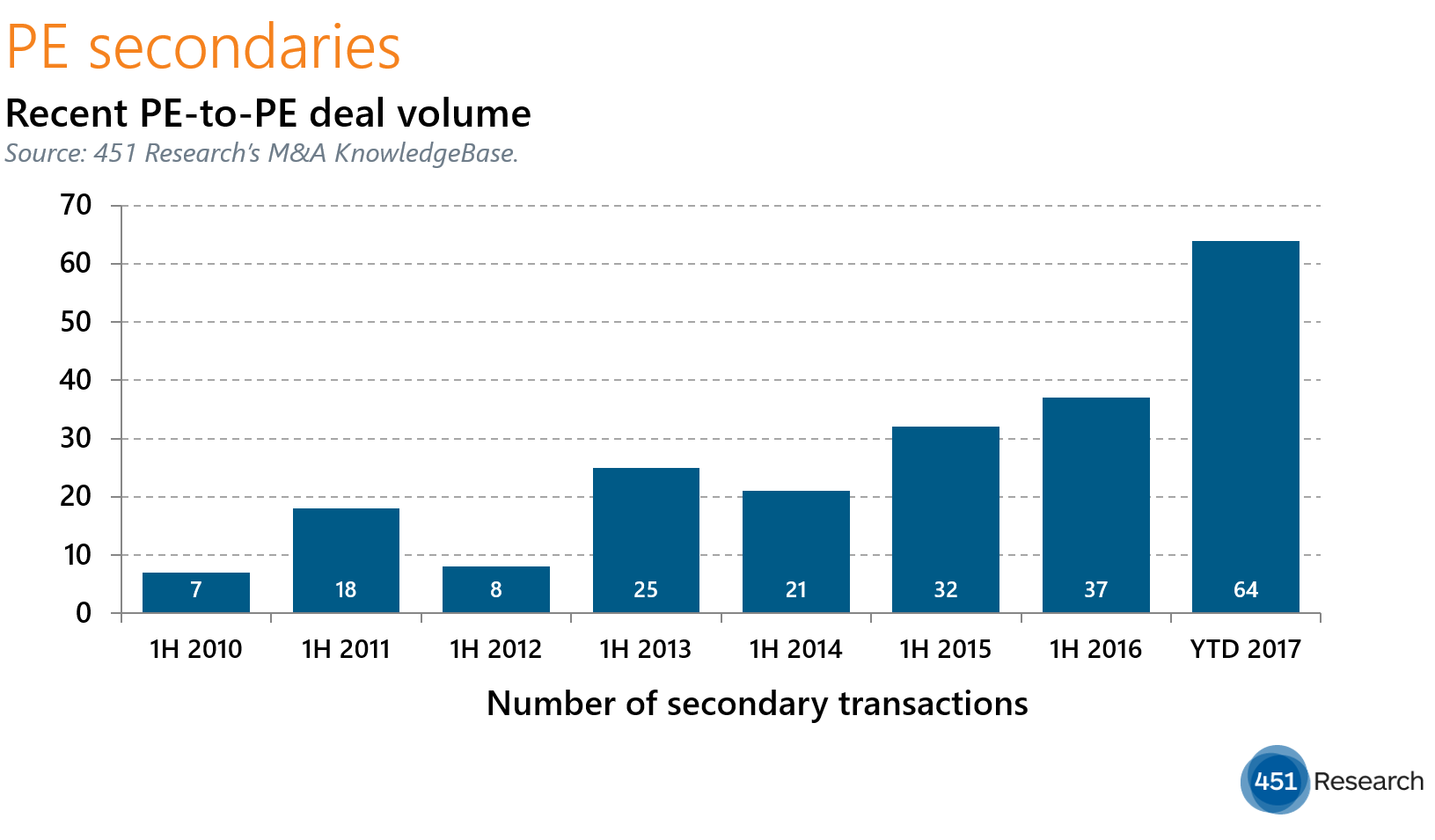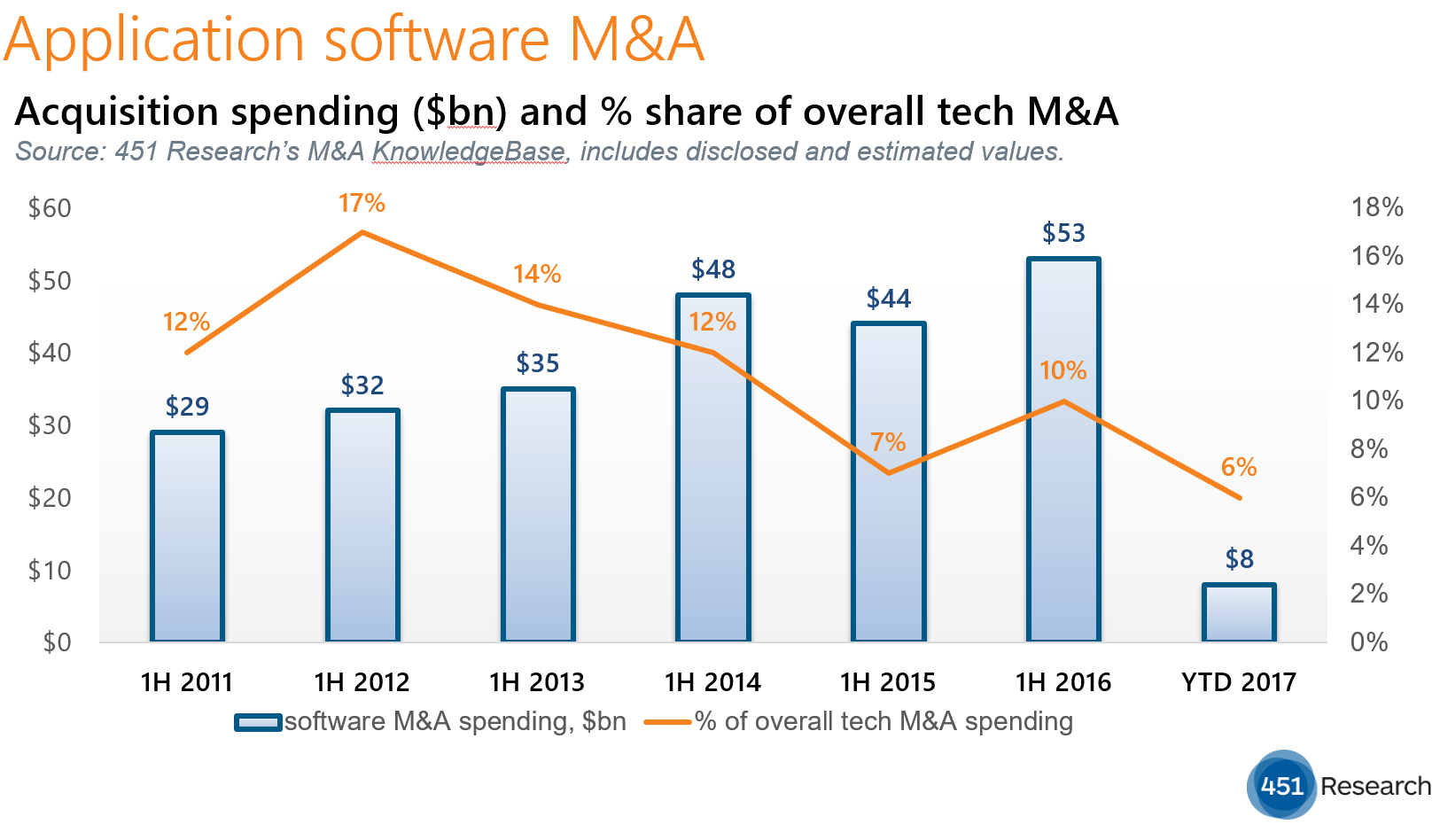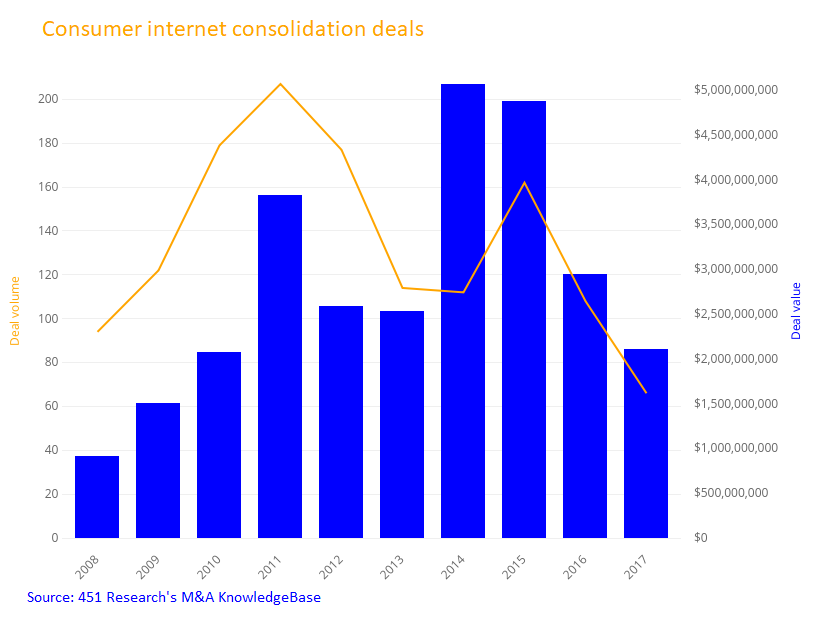Contact: Scott Denne
Venture capitalists haven’t faced an exit environment as challenging as they’ve seen this year since the start of the decade. Through the first half, VCs are on pace to sell the fewest number of portfolio companies in seven years. Yet at the high end of the market, the exits have never been bigger, driving the total value to a near-record level. Only five venture-backed companies have ever sold for $3bn or more and two of those deals – AppDynamics and Chewy – printed this year.
The dollar value of sales of venture-backed companies sits abnormally high at $16.2bn through the first half of the year. According to 451 Research’s M&A KnowledgeBase, that’s the highest value of VC exits in the first half of any year since 2002, with the exception of 2014. Yet the number of sales from VC portfolios sits at 285, the slowest start to the year since 2010.
The deceleration continued through the end of the second half as only 33 venture-backed companies were sold in June, the least of any month in the past eight years. And the decline in volume (as well as the abnormally high value of exits that came with it) extended across both enterprise- and consumer-tech startups – although in the latter category the decline marks a continuation of a four-year streak that became more pronounced as the most frequent acquirers of consumer tech stepped back from the market.
Google, the most active buyer of venture-backed startups over the previous four years, inked just three such deals this year (of five total transactions). Facebook hasn’t done a single one, while Yahoo sat on the sidelines for the 18 months leading up to its just-closed sale to Verizon. Apple and Amazon have been in the market, although neither has printed a deal for more than $250m since 2015. Subscribers to 451 Research’s Market Insight Service can access a detailed look at first-half venture exits.
For more real-time information on tech M&A, follow us on Twitter @451TechMnA.

